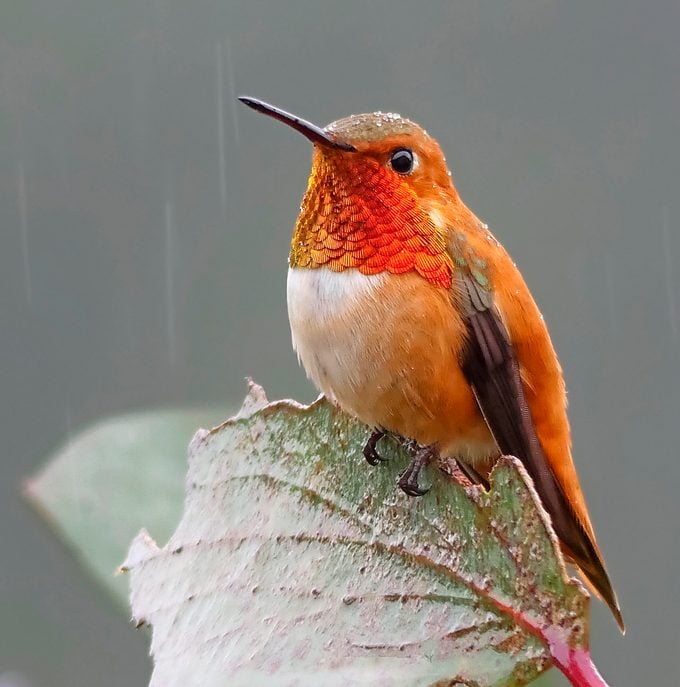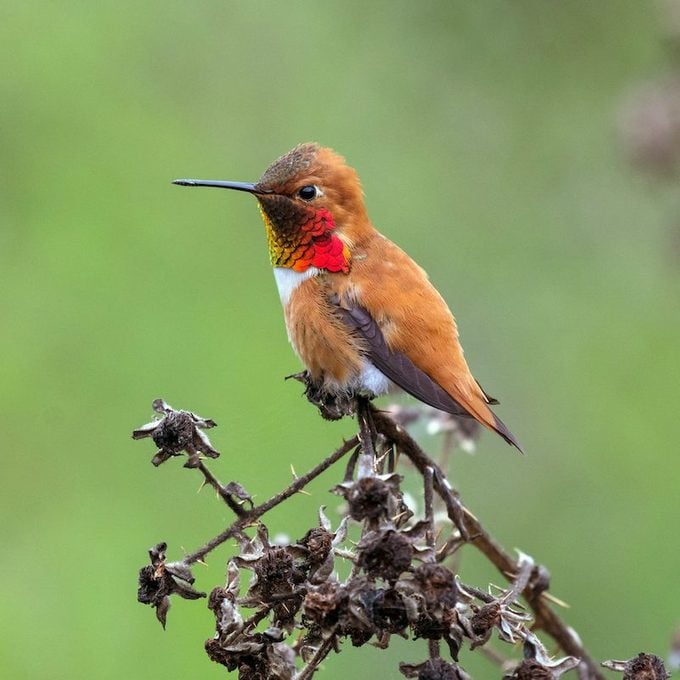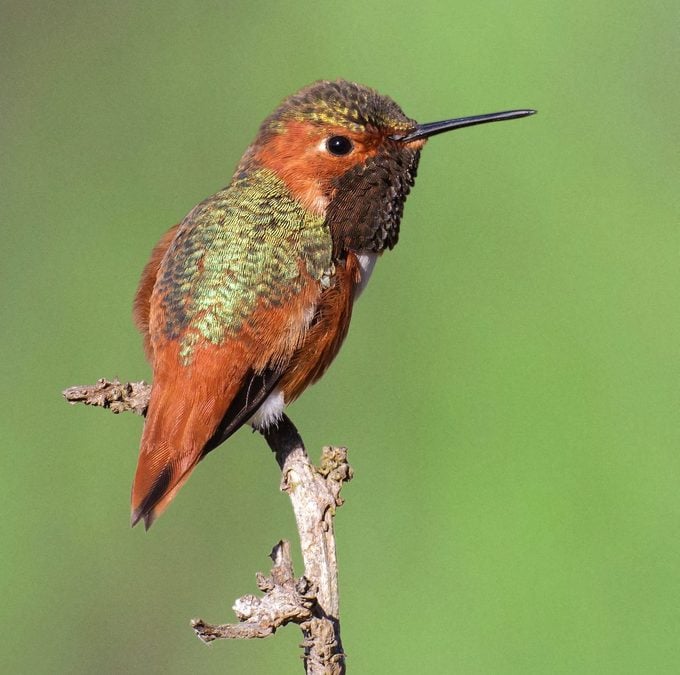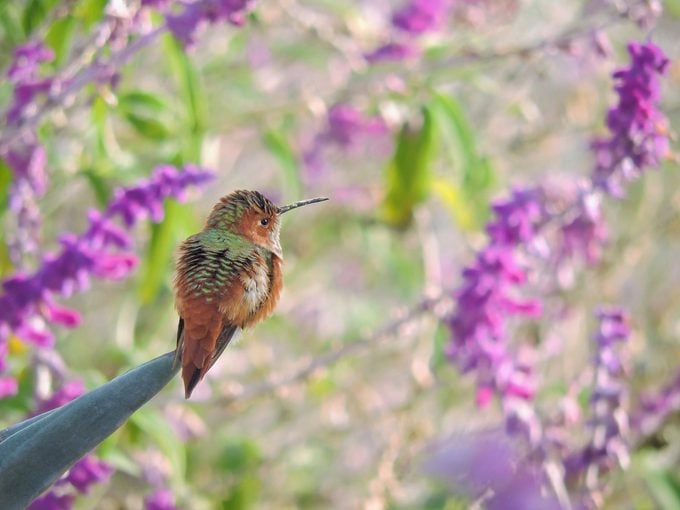Rufous vs Allen’s: Hummingbird Look-Alikes
Updated: Apr. 23, 2024
Similar field marks and overlapping ranges make it difficult to identify a rufous vs Allen's hummingbird. Learn how to tell them apart!
On This Page
Birding Challenge: Rufous vs Allen’s Hummingbird

You might call these hummingbird lookalikes a real humdinger. It’s tricky to tell rufous vs Allen’s hummingbirds apart, largely because of their orange plumage and overlapping ranges. Thankfully, there are a few tricks you can use to determine whether you’re looking at an rufous or Allen’s hummingbird. Here’s how.
Learn to identify 15 types of hummingbirds found in the United States.
Rufous Hummingbird Identification

Adult male rufous hummingbirds have a uniformly orange back and tail, though some have glimmers of green. The second feather from the middle of their tail has a notched tip that’s visible when the tail is fanned out.
As far as observable behaviors, males dive in oval shape around perched females. That said, they can show variation when practicing or defending their territory. Their range covers a wide swath of western states, including Alaska and the Rockies.
See the brilliant spectrum of hummingbird colors.
Allen’s Hummingbird Identification

To identify a male Allen’s hummingbird, look for an overall a mix of orange and green on adult males; females and juvenile males are nearly identical in hue to rufous. An Allen’s outermost feathers are slimmer and pointier than the rest.
When flying around perched females, males do so in a “J” shape. Their range is restricted to West Coast in breeding season, and Southern California and Arizona during migration.
Meet the Costa’s hummingbird: jewel of the desert.
Key Differences: Range and Field Marks

Perhaps the clearest and most easily spotted difference between rufous vs Allen’s hummingbirds is the clear presence of green feathers on the back of an adult male Allen’s hummingbird. On rufous hummingbirds, that green coloration is less prominent.
Also worth noting is the differences in ranges between these birds. In the United States, birders can find Allen’s hummingbirds in the lower halves of Arizona and California during migration, and along the California and Oregon coasts during breeding season. This isn’t the case for the rufous, which has a more extensive range covering a large portion of the western United States.
Complicating it all further, ornithologists have pinpointed a 200-mile zone in Oregon and California where rufous and Allen’s hummingbirds interbreed. Hybrid individuals display tiny differences in their tail shapes and courtship behaviors. Talk about a tricky bird to identify!
Next, learn how to identify an Anna’s hummingbird.
Sources
- Cornell Lab of Ornithology, rufous hummingbird
- Cornell Lab of Ornithology, Allen’s hummingbird
- Oxford University Press
Why Trust Us
For nearly 30 years, Birds & Blooms, a Trusted Media Brand, has been inspiring readers to have a lifelong love of birding, gardening and nature. We are the #1 bird and garden magazine in North America and a trusted online resource for over 15 million outdoor enthusiasts annually. Our library of thousands of informative articles and how-tos has been written by trusted journalists and fact-checked by bird and garden experts for accuracy. In addition to our staff of experienced gardeners and bird-watchers, we hire individuals who have years of education and hands-on experience with birding, bird feeding, gardening, butterflies, bugs and more. Learn more about Birds & Blooms, our field editor program, and our submission guidelines.

